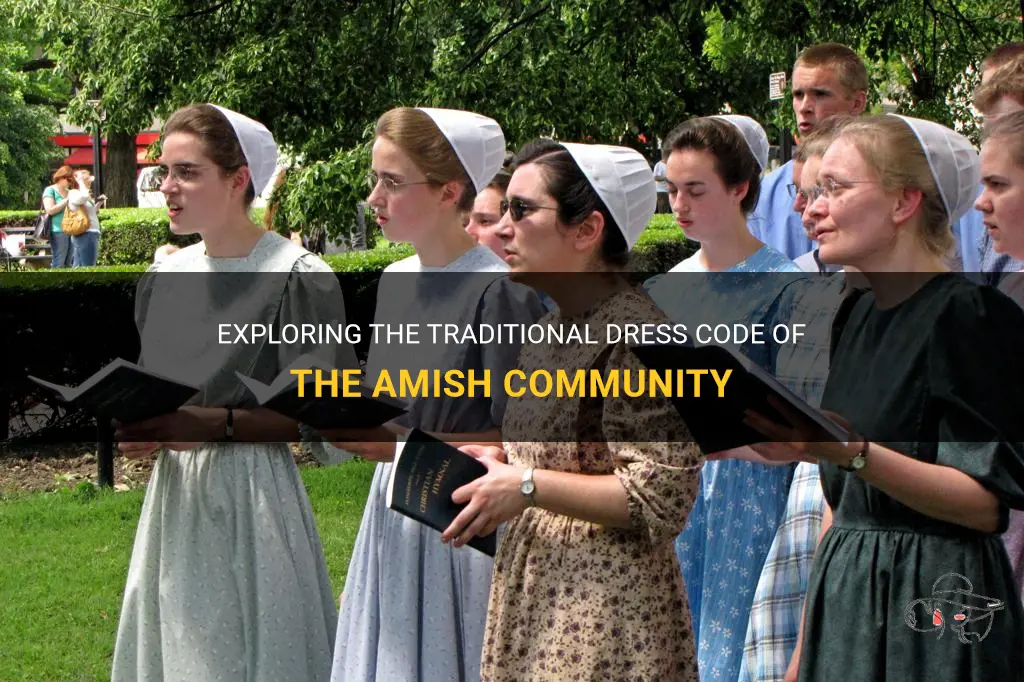
The Amish community is well-known for their simple and traditional way of life, which is reflected in their dress code. In a world filled with modern fashion trends and constantly changing styles, the Amish dress code serves as a reminder of the timeless values and beliefs that the community holds dear. From their distinctive clothing choices to their commitment to modesty and simplicity, the Amish dress code offers a fascinating glimpse into a way of life that has remained virtually unchanged for centuries.
| Characteristics | Values |
|---|---|
| Modest Clothing | Amish clothing is modest, covering all parts of the body |
| Plain Colors | Amish dress in solid, muted colors such as black, blue, or gray |
| No Patterns | Amish clothing does not have any patterns or designs |
| No Bright Colors | Bright or flashy colors are avoided in Amish dress |
| No Jewelry | Amish do not wear any jewelry, including wedding rings |
| No Makeup | Amish women do not wear makeup |
| No Zippers | Clothing is fastened with buttons or hooks, no zippers |
| No Velcro or Snaps | Fastenings are simple, often using hooks or buttons |
| No Belts | Amish do not wear belts |
| No Elastic Waistbands | Clothing has adjustable waistbands but no elastic |
| No Ties or Bowties | Amish men do not wear ties or bowties |
| Full Skirts for Women | Women wear long, full skirts with pleats or gathers |
| Capes or Aprons for Women | Women may wear capes or aprons over their dresses |
| Suspendered Pants for Men | Men wear pants with suspenders instead of belts |
| Straw or Felt Hats for Men | Amish men wear straw or felt hats |
| Plain, Closed-Toe Shoes | Footwear is simple, closed-toe, and without flashy colors |
What You'll Learn

What is the traditional Amish dress code?
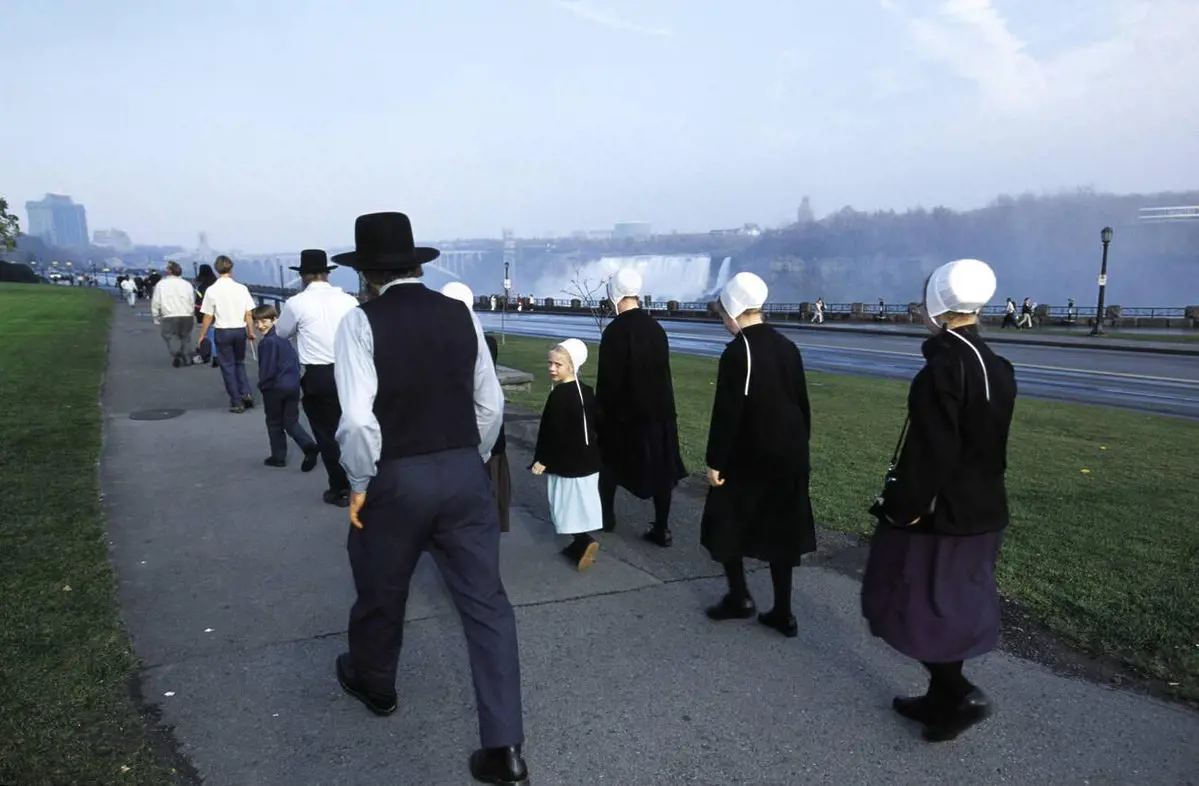
The Amish community is known for leading a traditional and simple way of life. One of the most visible aspects of their culture is their dress code, which is steeped in tradition and reflects their commitment to modesty and simplicity. In this article, we will explore the traditional Amish dress code and delve into its significance within the community.
The Amish dress code is based on a set of unwritten rules and customs that have been passed down from generation to generation. It serves as a symbol of their faith, communal identity, and resistance to societal norms.
For both men and women, the clothing is plain and functional, devoid of any fashionable trends or excess ornamentation. The colors used are typically muted, with shades like black, blue, and gray being the most common. Bright colors and patterns are generally avoided.
Women traditionally wear long dresses that cover their arms and legs, and often wear aprons and head coverings as well. The dresses are made from simple fabrics such as cotton or wool, and are typically handmade within the community. The dresses are designed to be loose-fitting and modest, concealing the shape of the body. The head coverings, known as kapps, come in various styles and are worn to signify a woman's marital status.
Men, on the other hand, typically wear plain button-up shirts and trousers. In some communities, men wear suspenders instead of belts. Coats and vests are also common, especially during colder seasons. The clothing is often made from durable fabrics like denim or twill and is designed to be practical and long-lasting.
The dress code serves multiple purposes within the Amish community. Firstly, it reinforces the community's commitment to simplicity and humility. By eschewing fashionable trends and excessive adornment, the Amish are able to focus on more important aspects of their lives, such as faith, family, and community.
Secondly, the dress code acts as a symbol of separation from the outside world. The distinctive clothing sets the Amish apart and helps to maintain their distinct cultural identity. It is seen as a way to resist the pressures and influences of modern society.
Lastly, the dress code promotes a sense of unity within the community. By dressing in similar attire, the Amish are able to create a sense of camaraderie and belonging. It fosters a feeling of equality among community members, as everyone adheres to the same standards of modesty and simplicity.
While the Amish dress code may seem restrictive to outsiders, it is a deeply ingrained and cherished aspect of their culture. It serves as a tangible reminder of their faith and commitment to a simpler way of life. In a world dominated by ever-changing fashion trends and a constant need for self-expression, the Amish dress code stands as a steadfast symbol of tradition and community.
Exploring the Price Range of Cache Dress Pants: A Guide for Fashion Enthusiasts
You may want to see also

How does the Amish dress code differ from mainstream fashion?

The Amish community is known for its unique way of life, which includes a distinctive dress code that sets them apart from mainstream fashion. The Amish dress code is rooted in their religious beliefs and is meant to promote modesty, simplicity, and humility. In this article, we will explore how the Amish dress code differs from mainstream fashion.
Modesty is the key:
The Amish dress code places great emphasis on modesty. Amish clothing is designed to cover the body and not draw attention to oneself. For example, women wear long skirts or dresses that typically reach below the knees, while men wear pants and shirts with collars. The use of bright colors, patterns, and flashy accessories is avoided, as these may be seen as a form of vanity.
Simplicity in style:
Amish fashion is characterized by its simplicity. Amish clothing is plain and lacks unnecessary adornments or decorations. Women wear solid-colored dresses in muted shades like blue, green, or brown, while men often wear plain-colored shirts and pants. The focus is on function rather than aesthetics.
Embracing practicality:
Practicality is another key aspect of the Amish dress code. Clothing is chosen for its durability and ability to withstand the demands of manual labor. Men often wear suspenders for added support, while women opt for aprons to protect their dresses. These functional clothing choices reflect the Amish way of life, which emphasizes hard work and self-sufficiency.
Communal identity:
The Amish dress code also serves as a way to reinforce their sense of community and belonging. By dressing in a similar manner, they are able to distinguish themselves from the outside world and maintain a strong communal identity. This shared dress code helps to foster a sense of unity and cohesion among the Amish people.
Limited fashion influences:
Unlike mainstream fashion, the Amish dress code is not influenced by trends or popular culture. The Amish community largely exists in isolation and has limited exposure to external fashion influences. This allows them to preserve their traditional clothing customs and maintain a distinct style that is characteristic of their way of life.
In conclusion, the Amish dress code differs significantly from mainstream fashion. It prioritizes modesty, simplicity, practicality, and communal identity. The Amish choose clothing that covers the body, lacks embellishments, and is durable for their labor-intensive lifestyle. By adhering to their unique dress code, the Amish are able to maintain their sense of cultural identity and distance themselves from the trends and influences of mainstream fashion.
Is There a Dress Code at House of Prime Rib?
You may want to see also

Are there specific rules or guidelines for Amish dress?
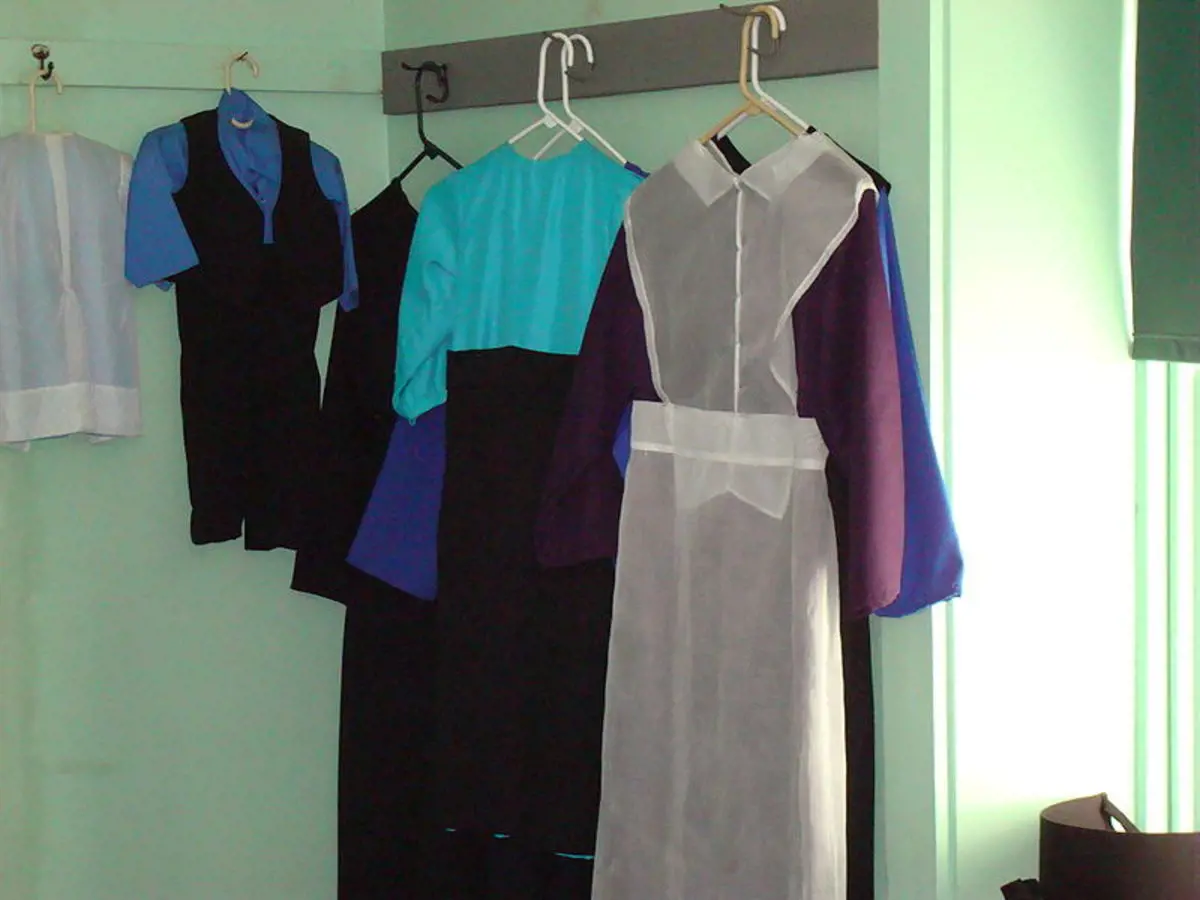
Amish Dress: Rules and Guidelines for Modesty and Tradition
The Amish community, known for its simplicity and adherence to traditional values, has specific rules and guidelines when it comes to dress. Amish clothing traditions aim to promote modesty, unity, and separation from the outside world. Let's explore the specific rules and guidelines that govern Amish dress.
Modesty and Simplicity:
Amish clothing is characterized by its modesty and simplicity. Both men and women wear plain garments that are usually made in subdued colors such as black, dark blue, or grey. This reflects the community's emphasis on humility and uniformity.
Distinctive Styles:
Amish dress is distinguished by its unique styles and cuts. Men typically wear dark-colored pants with suspenders, a plain shirt, and a jacket or coat. They also wear broad-brimmed hats and occasionally have long beards. Women, on the other hand, wear long dresses with long sleeves, often made from solid-colored fabric. They cover their heads with prayer caps or bonnets.
Homemade and Customized Clothing:
Amish clothing is typically handmade by the community members themselves. Sewing and tailoring skills are valued and passed down through generations. The clothes are made from durable fabrics to ensure longevity and to reduce the need for constant replacement.
Symbolism:
Amish clothing reflects the community's values and beliefs. For example, buttons are seen as too fancy, so garments are fastened with hooks and eyes instead. Floral prints, bright colors, and patterns are avoided to maintain simplicity and avoid attracting attention.
Separation from the World:
Amish clothing serves as a visible symbol of separation from the outside world. By dressing differently, the Amish maintain a distinct identity and reinforce their commitment to their community's values. This separation also extends to the use of modern-day conveniences such as zippers, which are typically avoided in favor of traditional fastenings.
Uniformity and Equality:
Amish dress promotes unity and equality within the community. By adhering to the same guidelines and styles, individuals are encouraged to focus on their shared beliefs rather than personal appearance. This sense of unity is further reinforced by the absence of jewelry or individualized accessories.
It's important to note that Amish dress rules may vary slightly between different Amish affiliations and communities. Additionally, there may be specific regional or seasonal variations, such as the use of straw hats during warmer months or heavier coats during winter.
In conclusion, Amish dress is guided by rules and guidelines aimed at promoting modesty, simplicity, unity, and separation from the contemporary world. The distinct styles, homemade clothing, and adherence to traditions reflect the Amish community's commitment to their unique way of life. By upholding these principles, Amish clothing serves as a visible symbol of their values and beliefs.
Lollapalooza Fashion: What to Wear to the Ultimate Music Festival Experience
You may want to see also

What are the reasons behind the Amish dress code?
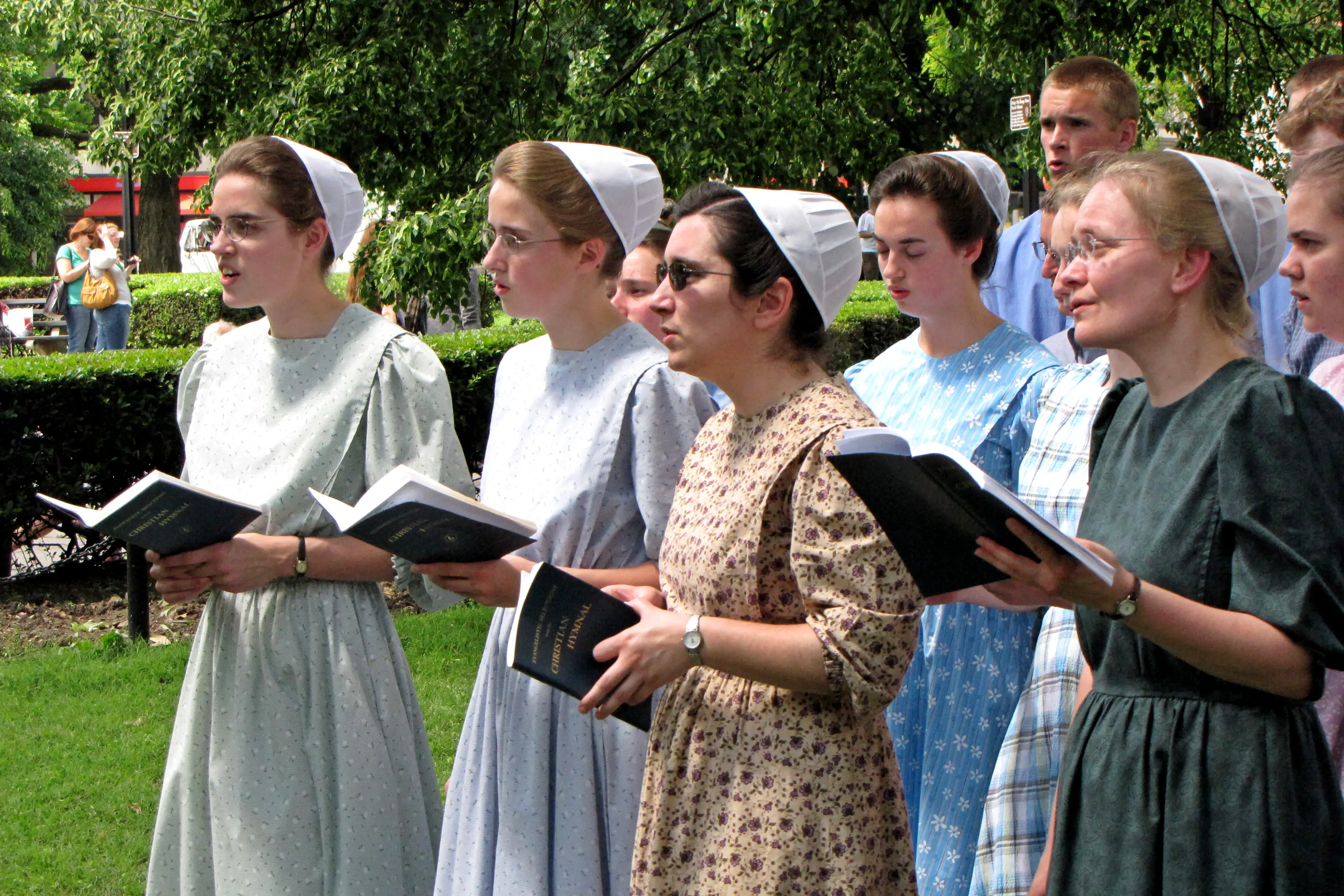
The Amish community is well-known for its distinct style of dress, which sets them apart from the modern world and reflects their commitment to simplicity and humility. The Amish dress code is not based on current fashion trends or personal preferences; instead, it is deeply rooted in their religious beliefs and cultural traditions. There are several reasons behind the Amish dress code, including religious symbolism, modesty, community identity, and practicality.
Religious Symbolism: The Amish dress code is a visual representation of their commitment to their faith and adherence to biblical principles. The Bible is seen as the ultimate authority in their community, and they interpret it literally, including its passages on modesty and separation from the world. The plain, conservative clothing worn by the Amish is a way for them to demonstrate their humility and focus on the spiritual rather than the material.
Modesty: Modesty is a core value in the Amish community. Their dress code is designed to cover the body modestly and avoid excesses that could lead to vanity or pride. Amish clothing typically consists of plain, neutral-colored fabrics with minimal adornment. Women wear long dresses and aprons, while men wear pants, shirts, and suspenders. The clothing is loose-fitting and does not reveal the body's shape, as the focus is on the individual's character rather than their outward appearance.
Community Identity: The Amish dress code also serves as a way for members of the community to identify and differentiate themselves from the outside world. By adhering to a distinct dress code, the Amish maintain a strong sense of community and unity. The clothing acts as a visual marker, signaling to others that they are part of the Amish community and share their beliefs and values. This sense of identity and unique appearance contributes to the Amish's ability to live separately from mainstream society.
Practicality: While the Amish dress code is primarily based on religious and cultural reasons, there are practical considerations as well. The simple, durable clothing worn by the Amish is designed to be functional and easy to maintain. The styles have changed very little over time, as the Amish prefer timeless designs that are practical for their daily activities, such as farming and household tasks. The clothing is typically handmade and made from natural fibers, which allows for easy repairs and reduces dependence on outside sources.
In summary, the Amish dress code reflects their religious beliefs, commitment to modesty, community identity, and practical considerations. By adhering to a plain and conservative style of dress, the Amish demonstrate their devotion to their faith, maintain their modesty, strengthen their sense of community, and meet their practical needs. While it may seem unusual to outsiders, the Amish dress code plays a vital role in their way of life and helps them preserve their unique culture and traditions.
The Price Tag on That Dress in Macy's Window: What You Need to Know
You may want to see also

How has the Amish dress code evolved over time?
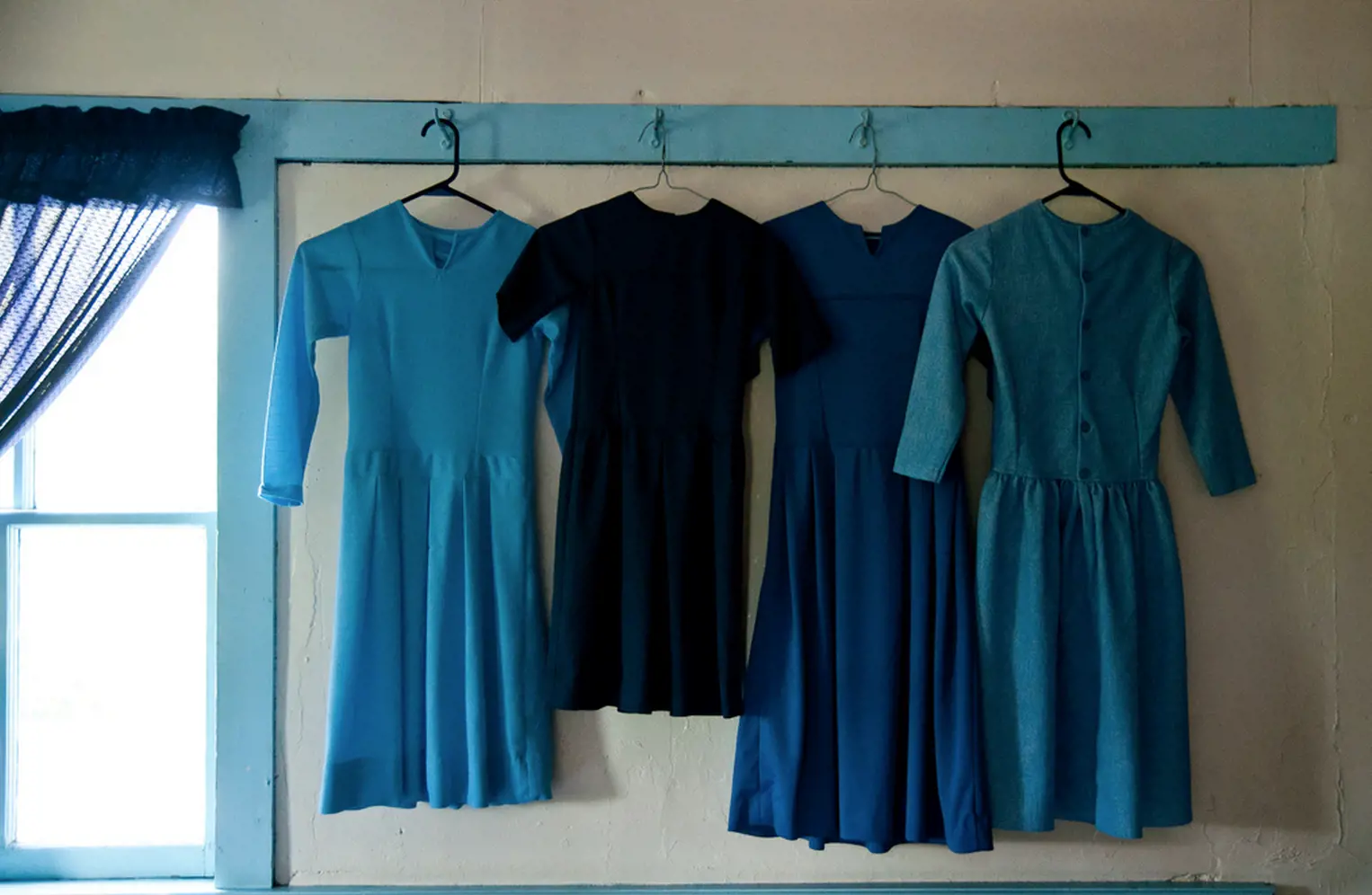
The Amish community is known for its strong adherence to traditional values and a simple lifestyle. As a part of this lifestyle, the Amish have a distinct and easily recognizable dress code that sets them apart from mainstream society. Over the years, the Amish dress code has evolved in response to various factors such as practicality, changes in societal norms, and religious beliefs.
Traditionally, the Amish dress code was primarily determined by practicality and functionality. The clothing was made from plain and sturdy fabrics such as cotton and wool, which were durable and could withstand the demands of manual labor. The women wore long dresses and aprons, while men wore dark trousers, suspenders, and plain shirts. The clothing was unadorned, without any buttons or other decorative elements.
However, the Amish dress code has not remained stagnant. In recent years, there have been some changes and adaptations to the traditional dress code. One significant change is the introduction of colors other than dark or plain shades. Some Amish communities now allow women to wear dresses in pastel or muted colors, which was previously considered too flashy. This change reflects a desire to embrace elements of modernity while still maintaining their modesty and simplicity.
Another significant change in the Amish dress code is the allowance of slightly more fitted clothing. Previously, the clothing was loose-fitting and shapeless to maintain modesty and avoid drawing attention to the body. However, with changes in societal norms, some Amish communities have made adjustments to the dress code to allow for slightly more fitted clothing while still adhering to the principle of modesty.
Religious beliefs also play a crucial role in the evolution of the Amish dress code. The Amish believe in living a separate and distinct life from the mainstream society. The clothing serves as a visual representation of their commitment to these beliefs. As a result, the dress code has remained relatively unchanged in many Amish communities, with a strong emphasis on simplicity, modesty, and uniformity. The strict adherence to these principles can be seen in the way Amish individuals continue to wear clothing without any modern advancements such as zippers or buttons.
Overall, the Amish dress code has evolved over time to adapt to practicality, changing societal norms, and religious beliefs. While some changes have been made to incorporate modern elements, the dress code remains rooted in simplicity, modesty, and uniformity. The Amish continue to present a visual representation of their traditional values and distinct way of life through their clothing. Despite the evolving nature of the dress code, the focus on practicality and adherence to their religious beliefs remains a constant for the Amish community.
The Ultimate Guide to Dressing for a Hike as a Plus Size Explorer
You may want to see also
Frequently asked questions
The Amish dress code is a set of rules that governs how members of the Amish community should dress. These rules are based on their religious beliefs and cultural traditions. The dress code emphasizes modesty, simplicity, and the rejection of fashion trends and worldly attire.
Amish women typically wear long dresses or skirts, often in solid colors like blue, black, or dark green. The dresses are always ankle-length and have high necklines. They also wear aprons and caps or bonnets to cover their hair.
No, Amish women do not wear makeup. The Amish believe that wearing makeup goes against their ideals of simplicity and natural beauty. They believe that enhancing one's appearance with cosmetics is a form of pride and vanity.
In general, Amish men wear traditional clothing, which consists of plain, solid-colored pants, suspenders or braces, and a button-up shirt. They also wear a wide-brimmed hat and sometimes a waistcoat or vest. While the clothing is typically simple and without patterns or logos, it is not necessarily "old-fashioned." They may wear modern fabrics and styles as long as they adhere to the basic principles of modesty and simplicity.







